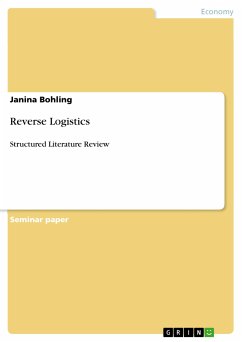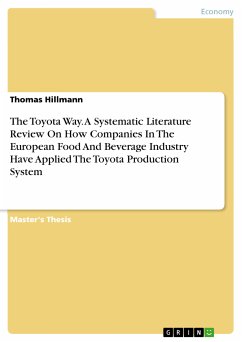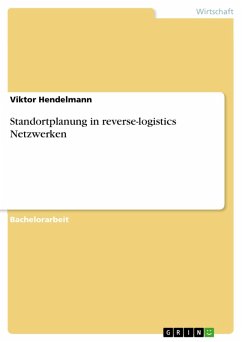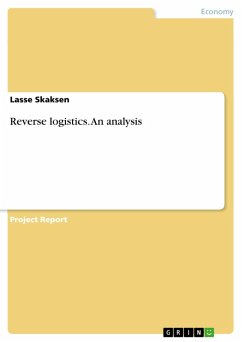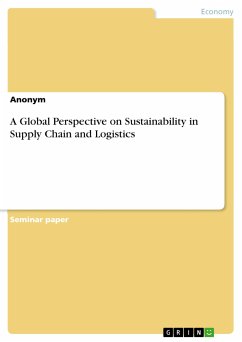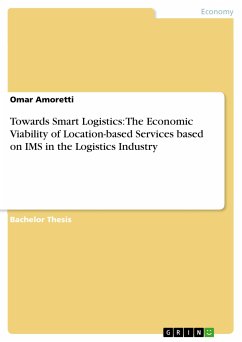Bachelor Thesis from the year 2004 in the subject Business economics - Supply, Production, Logistics, grade: 2,0 (B), Växjö University (School of Management and Economics), language: English, abstract: Reverse logistics is a concept that has become more and more popular during the last decades. According to Fleischmann it is defined as follows: "Reverse Logistics is the process of planning, implementing and controlling the efficient, effective inbound flow and storage of secondary goods and related information opposite to the traditional supply chain direction for the purpose of recovering value or proper disposal."1 The drivers for this development can be found in three areas, namely the environment, the logistics and the customers. The environment is mostly represented by governments or the European Union that make regulations to guard it because there is an urgent need for protection like the increasing waste problems show. The companies with their major goal of making profit try to be as efficient and effective as possible and like to put the lever on logistics that provides good qualifications to reach this goal. Last but not least the customers with their buying behaviour and expectation of a healthy, sustainable environment for them and the next generations put also a certain pressure on reverse logistics systems. These fields chosen for study are often discussed separately. For example in most of the books about Supply Chain Management or Logistics Management there is at least one paragraph explaining the definition of reverse logistics and sometimes also the activities appearing within reverse logistics like collecting, handling, cleaning, refilling or redistribution. However, very seldom there is information given about the governmental regulations influencing these activities. Otherwise, there are many law books providing all of the information the government and European Union suppose the companies active in reverse logistics systems to know, but the logistical needs and the customers' position is not paid attention to. Furthermore, there is lots of marketing literature concerning the customers' attitude towards recycling, but again rather independently from governmental regulation and logistics in most cases. Up to now there has not really been done much research about reverse logistics systems in general and the factors that are influencing this system.
Dieser Download kann aus rechtlichen Gründen nur mit Rechnungsadresse in A, B, BG, CY, CZ, D, DK, EW, E, FIN, F, GR, HR, H, IRL, I, LT, L, LR, M, NL, PL, P, R, S, SLO, SK ausgeliefert werden.



